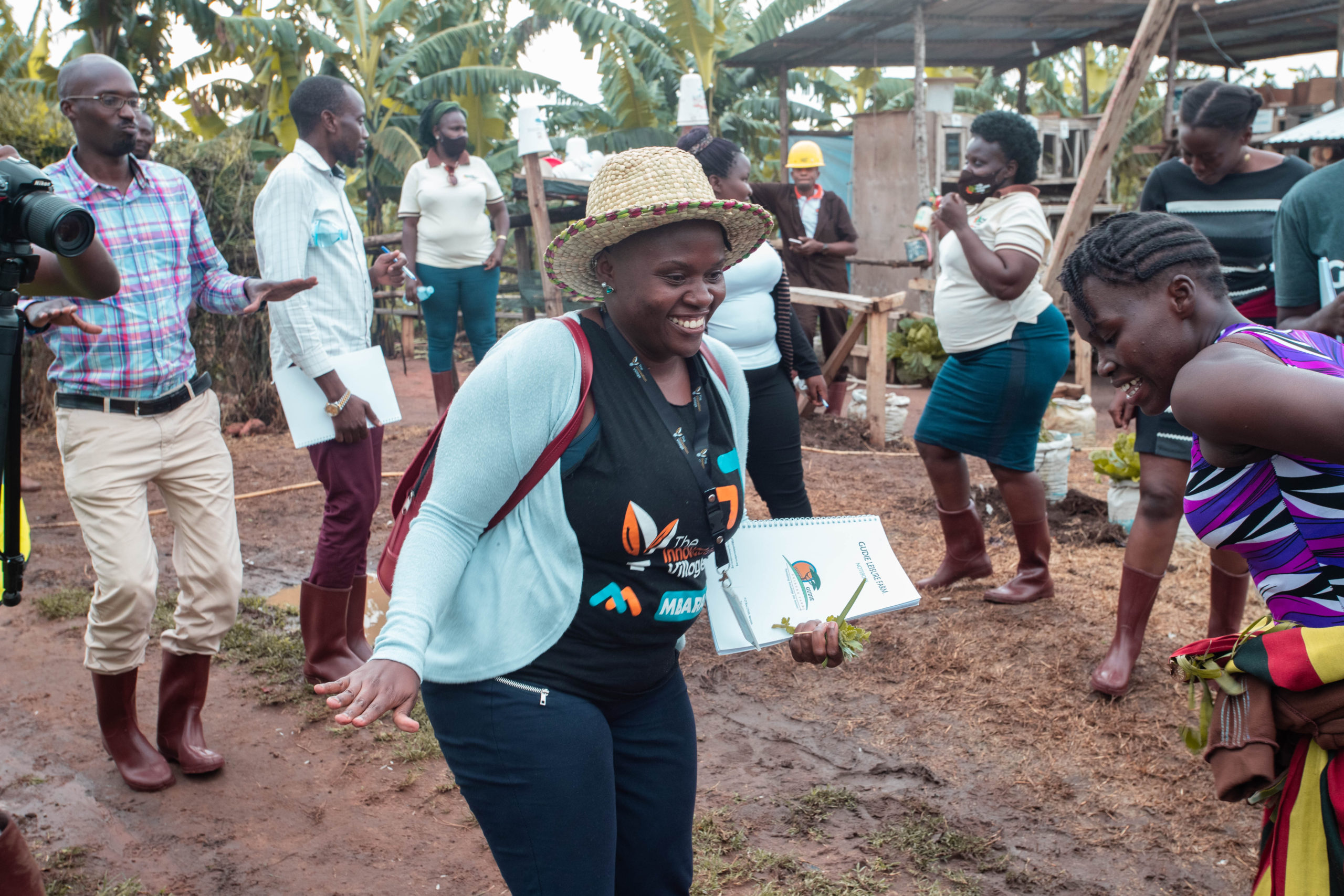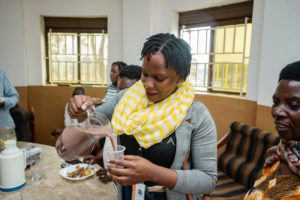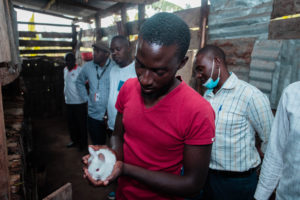14 Apr

Known for its rolling hills and fair weather, it is no surprise that the south-western region of Uganda is dotted with lush gardens and cattle grazing serenely on the hillside. From crop to livestock farming done primarily on a subsistence level to commercial farming in certain parts of the region, agriculture has been fully embraced as a major economic activity.
This combination of pleasant factors is greasing the wheels of an emerging industry, the agritourism industry. From within the region and beyond, locals who are interested in taking leisurely or educative strolls flock farmlands for this purpose.
At the recent agritourism expo organised by The Innovation Village Mbarara, I learnt that STEMA farm which is located in Sheema District is all about mixing farming with learning.
Upon arrival, as per farm culture, the tourists first stop is at the farm’s dining hall. A breakfast spread consisting of steaming sweet plantain, potatoes, dark leafy greens and warm broths, awaits the guests. One of the highlights of the meal is a novel delicacy of rabbit and duck stew that is new to many Ugandan palettes including the ones of the visitors. Our guide who doubles as the farm chef, Rodney Mbaga says experiencing the two delicacies is part of the farm experience given their rarity on Ugandan menus.
With the last delicious morsels of food washed down with a cold beverage of local millet, the farmers lead the replenished guests onto the 100 acres of farmland.

As far as the eye can see, STEMA farm is an impressive venture and yet it has humble beginnings. Owned by the parents of David Mbaga and Rodney Mbaga, our tour guides, STEMA farm started in 1990 as a small plot of land with one dairy cow. Since then, the farm has expanded to become a large commercial mixed farm.
The farm tour winds through the gardens of plantain, mounds of potatoes, shrubs of robusta coffee and a variety of other local food crops. The touring party pauses beside the pasture lands where cattle, goats and free-range poultry can be seen foraging while David Mbaga indulges the curiosity of the visitors with answers to their questions on farming. Bordering the pasturelands is a fish pond and fruit orchards sheltering beehives past which we are advised to hurry. A brief pause at the rabbit pens ushers in a delightful interactive experience for the farm visitors. The visitors are encouraged to feed the rabbits on the stash of potato vines at hand.

The last stop of the visit is before a towering complex building in its final stages of construction. This building overlooking a moving scenery of green undulating hills is the logical response to a growing demand for tourism experiences at STEMA farm. So far, the farm earns between Shs400,000 and Shs500,000 in revenue every month.
The farm has plans to capitalise on this revenue stream. It plans to host students interested in agriculture, couples who want to honeymoon in the serene countryside and other farmers who want to spend some time on the farm. In a week’s time, STEMA farm will be receiving an exchange german student who will spend three months learning the local practices here.
At Gudie Leisure Farm, a chain of three farms has been constructed to incorporate farming and leisure. The farm tour is an interactive affair in which the visitors engage their senses with aromatic herbs, have a go at farm machines and learn various things from the farm leads in piggery, poultry and dairy. In between these visits are interludes of music and dance performed by the youths who stay on the farm under the incubation program of agripreneurs.
Farms like STEMA and Gudie expand the definition of Tourism to incorporate agriculture. Already a lucrative industry for the country, the tourism sector raked in $1.6 billion (Shs5.9 trillion) in 2018 according to the Annual Tourism Sector performance report for the financial year 2018/19. At a national level, Uganda has been heavily dependent on international arrivals but the Covid-19 pandemic fueled the need for the country to lure local tourists in new ways.
Sandra Natukunda, Uganda Tourism Board (UTB) senior public relations officer speaks of the sector’s ability to harness the two vibrant sectors that contribute greatly to the Ugandan economy.
“We have understood that great places to visit must be great places for host communities to live in. Agriculture is still very much a community activity in Uganda. We understand that including host communities in the tourism value chain will enhance our long-term vision of ensuring sustainable tourism,” she says.
Last year, Uganda Tourism Board kicked off its plans by partnering with 18 agribusinesses in 51 districts in a bid to drum up traction to some of Uganda’s unique tourist destinations. The debate now is how tourism and agriculture can stop operating separately and organisations like The Innovation Village are taking steps to ensure this conversation is not simply lip-service. It is key to highlight the opportunities therein and create a pool of new jobs for youthful men and women.
“The role of Agriculture in this inter-related perspective for sustainability is fundamental, since agriculture has major impacts on critical factors including the rural landscape, the environment, food security and food safety upon which the tourism industry depends. Linking Agriculture with Tourism provides for natural synergies which when realized can spur economic development, increase farm income and open up more opportunities for persons working in both sectors,” Elaine Ayebaziibwe, The Innovation Village Western Regional Manager says.
Linking the two sectors, according to The Innovation Village, would increase national revenues, strengthen farmer groups and cooperatives, and enhance investment in rural areas. Take for instance a coffee house funded by the European Union and French Facility for Global Environment to improve financing for the Rwenzori National Park. The expectation is that the coffee house diversifies sources of income for the locals. The coffee house sells commercially packed coffee and offers coffee tours. As part of the tourism experience, visitors have a coffee tour of the bean to cup process.
While both the private sector and government continue to talk about how important it is for enterprises in both sectors to pivot their businesses, there is a need for more practical proposals on rethinking tourism. Conducting more product audits within regions beyond south-western Uganda is a good way to start to facilitate development of the agritourism segment. At UTB, the focus is currently on educating locals about agritourism to have as many farmers on board.
“We have gone ahead to develop an Agro tourism guide and standards checklist to orient existing and potential farmers seeking to venture in agro-tourism in the business requirements and the expected farm experiences. The checklist demonstrates what is required to develop from just an agricultural farm to a tourism product and experience,” Natukunda says. Private sector and the farmers are getting on board and what remains for now is whether more tourists can allow rediscovering their country in a different but interesting way.










Recent Comments